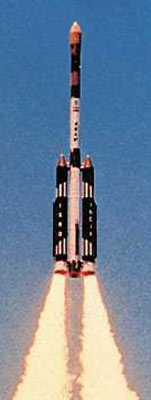Multi-satellite simultaneous launches by India's standard

Cartosat 2A------------650 kg occupy LEO
IMS 1------------------83 kg occupy LEO
CanX 6-----------------6.5 kg
CanX 2-----------------3.5 kg
AAUSAT 2--------------1 kg
Cute 1.7 + APD II-------3 kg
COMPASS 1-------------1 kg
Delfi C3 ----------------3 kg
SEEDS 2----------------1 kg
Rubin 8-AIS-------------7 kg
Multi-satellite simultaneous launches by Russia's standard

Globalstar 80------------- 700 kg occupy LEO
Globalstar 82------------- 700 kg occupy LEO
Globalstar 84------------- 700 kg occupy LEO
Globalstar 86------------- 700 kg occupy LEO
Globalstar 90------------- 700 kg occupy LEO
Globalstar 92------------- 700 kg occupy LEO
China's standard
SJ 9A------------- 790 kg
SJ 9B------------- 260 kg

Cartosat 2A------------650 kg occupy LEO
IMS 1------------------83 kg occupy LEO
CanX 6-----------------6.5 kg
CanX 2-----------------3.5 kg
AAUSAT 2--------------1 kg
Cute 1.7 + APD II-------3 kg
COMPASS 1-------------1 kg
Delfi C3 ----------------3 kg
SEEDS 2----------------1 kg
Rubin 8-AIS-------------7 kg
Multi-satellite simultaneous launches by Russia's standard

Globalstar 80------------- 700 kg occupy LEO
Globalstar 82------------- 700 kg occupy LEO
Globalstar 84------------- 700 kg occupy LEO
Globalstar 86------------- 700 kg occupy LEO
Globalstar 90------------- 700 kg occupy LEO
Globalstar 92------------- 700 kg occupy LEO
China's standard
SJ 9A------------- 790 kg
SJ 9B------------- 260 kg






 !
! Well done.
Well done.




 Even Indian can get it wrong.
Even Indian can get it wrong.









